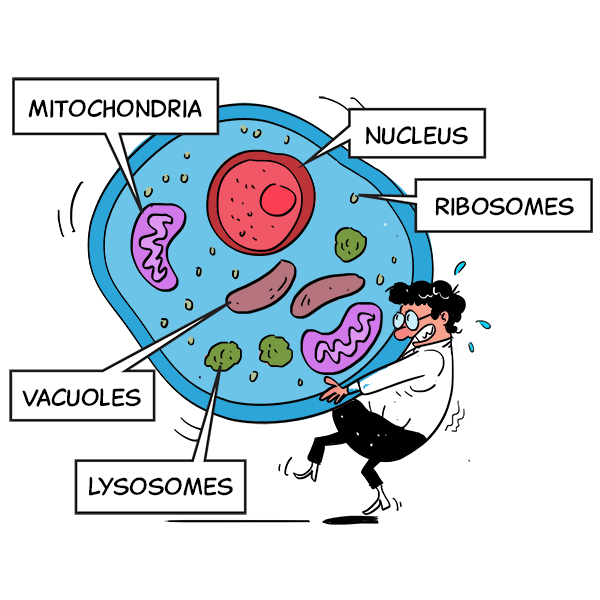Cells: The Basic Units of Life
Cells are the smallest units of life that can function independently. All living organisms, from the tiniest bacteria to the largest whales, are made up of cells. Humans, for instance, have an estimated 37 trillion cells!
Each cell is like a miniature factory, working tirelessly to keep us alive and healthy. They process nutrients, convert them into energy, build proteins, get rid of waste, and perform countless other tasks. Some cells have specialized roles, like nerve cells that transmit messages, or red blood cells that transport oxygen around our bodies.
The Structure of a Cell: A Miniature City
If you were to take a closer look at a cell, you would see it’s a lot like a miniature city, with different parts (organelles) performing specific functions:
- Cell Membrane: Like a city wall, the cell membrane surrounds the cell, protecting its contents and regulating what enters and exits.
- Nucleus: Acting as the city hall, the nucleus holds the cell’s DNA, which contains all the instructions needed for the cell to carry out its functions.
- Mitochondria: These are the power plants of the cell, using oxygen and sugar to create tiny molecules that are full of energy cells need.
- Ribosomes: They are like the factories within the industrial district, producing proteins that the cell needs to function.
- Lysosomes: They are the waste disposal facilities of the cell. They break down waste materials and cellular debris, keeping the cell clean and preventing buildup of unwanted materials.
- Vacuoles: These are like the storage units or warehouses of the cell, holding water, waste, and dangerous substances that would otherwise hurt the cell.

Cells: The Building Blocks of Complex Life
While all organisms are composed of cells, they are not all built the same way. There are two primary types of cells — prokaryotic and eukaryotic. Prokaryotic cells, found in bacteria and archaea, are simpler and smaller. They don’t have a nucleus, and their DNA floats freely within the cell.
Eukaryotic cells, on the other hand, are found in plants, animals, fungi, and protists. They are larger and more complex, with a nucleus and other specialized organelles. Humans, along with all other animals, are made of eukaryotic cells.
The world of cells might be tiny, but it’s incredibly vast and complex. Every second of every day, trillions of cells are working together to keep us alive and well.
